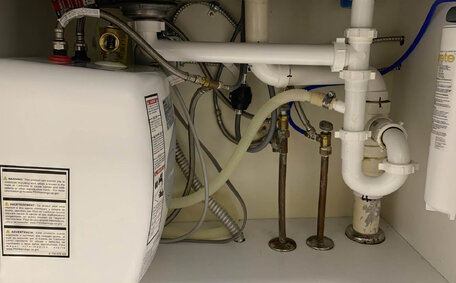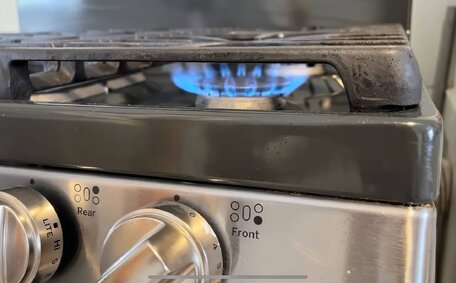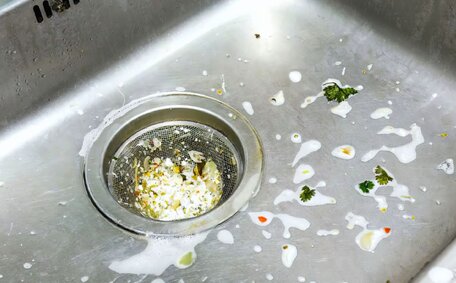Understanding Common Causes of Blocked External Drains
Household items and environmental factors, such as cold water solidifying grease, are causes blocked drain issues, creating troublesome obstructions. Food scraps containing oils or grease, hair, tree roots, litter, mud, and other debris are among the causes that can cause a buildup further down drain systems over time.
Intrusive tree roots in older earthenware or cracked PVC external drainage pipes can cause your plumbing system obstacles, winding its way into a smooth-running system. Disruption occurs when tree roots extend underground searching for nutrients and water, often entwining themselves around drain systems and impeding flow.
Grease, fats, and oils washed down sink can gradually congeal within pipes, causing significant blockages over time. When combined with food particles or soap residue, Such accumulation can often cause your drain to lose clear passage, as drains become lined with thick deposits. A build-up of dirt, leaves, grit, and litter causes blocked drains, especially noticeable in stormwater systems.
By understanding the common scenarios that introduce troublesome materials into your drains, steps can be taken to prevent imminent issues, ensuring the drain cleaner has less work to tackle. This practice encompasses the proper disposal of grease, fat, and food waste to prevent hair build-up down your drain, paired with routine drain maintenance, and swiftly contacting a plumber when initial signs of a potential blockage surface.
Identifying Signs of a Blockage
Several definitive indicators may suggest a relentless build-up of detritus in the drain, try to be mindful of these clues:
- Water pooling around or spilling into your drain cover or overflow relief gully, indicating drains can be compromised, particularly after heavy rain
- Gurgling noises from the drain pipes
- Blocked outdoor drain or slow-draining sink water
- Strong, foul smell emanating from a clogged outside drain, sometimes only noticeable when water goes down
- Wastewater overflowing back up inside your lowest bathroom sink, shower, or bathtub, indicating an inside drain issue
These symptoms imply a partial or full blockade is hampering the course of wastewater, a challenge especially relevant when your outside drain becomes compromised. The primary cause is often tree roots, though grease, soap residue and other household waste can lead to a stubborn drain blockage over time.
Timely intervention upon the first hint of a blocked drain outside is critical to mitigate health risks due to overflows, internal water damage, and cause severe repair costs if left untreated. Stay observant and responsive to any signs blocked drain issues might exhibit, swiftly organising a blocked drain inspection to address them.
Using Safe, Eco-Friendly Drain Cleaning Methods
When tackling an outside drain blocked, its good idea to start with natural, non-toxic methods before resorting to harsh chemicals.
Baking Soda and Vinegar
The easiest method to tackle DIY clog removal is by pouring a fizzy mix of soda white vinegar down the drain. Pouring a cup baking soda followed by one cup of white vinegar, leaving it to sit for a few minutes then flushing with hot water can effectively dissolve residue in blocked drain channels. The fizzy reaction helps break down elementary clogs and is mild enough to not damage pipes, making it safe for use further down pipe systems, including those made of PVC.
Boiling Water
Pour boiling water down pipe channels, followed by soda vinegar, to disintegrate small blockages without causing damage. Take care though, as this method can warp PVC piping over time or dislodge connected joints, potentially leading to a blockage your system.
Manual Rodding
Employing drain rods to manually dislodge obstructions presents an environmentally friendly alternative to effectively clear blocked drains. Make sure to wear rubber gloves which you can use to safeguard your hands from injuries. Only attempt this if you can safely access the drain.
Though natural methods are favourable, significant root intrusions or substantial grease fat and waste deposits may require firmer action with high-pressure cleaning by a professional drain unblocker. A highpressure hose can be used to blast away blockages, reaching further down the pipe without the need for harmful chemicals. If you wonder how can professional help make a difference, contact Jamisontown Plumbing to arrange an inspection if DIY options fail.
Trying DIY Techniques Before Calling a Professional
Before arranging costly repairs, explore how unblock drain outside techniques using common household items could be quite beneficial.
Using a Plunger
An impactful DIY tactic involves energetically plunging to ensure blockages can get dislodged from the drain cover. Vigorous plunging can clear blocked pathways, so try using this method to ensure free-flowing passages and release minor blockades. Exercise caution to provide a seal over the drain covers or pipework due to undue force.
Hand-Cranking a Drain Snake
Opt to use drain snake tools, like a manual crank or hand-turned auger, to navigate through a clogged drain and dispel deeper obstructions within the system. Navigate the metal snake end carefully into the drain and twist the handle to clear blocked drain buildup that’s settled further down the pipe. Ensure you have protective gloves to avoid contact with waste material.
Improvise with Wire Hangers
Lacking the right equipment, straighten a wire coat hanger and employ the tip to gently remove any hair, debris, and sludge that may get stuck, triggering a drainage blockage. Take care to clear out your drains from stubborn obstructive material without scratching the plastic pipes.
Efforts to unblock outside drain on your own could help circumvent considerable repair costs. But Should water stubbornly flow back up your pipes despite diligent efforts, contact our Jamisontown plumbing team to arrange an inspection.
Knowing When to Call a Professional Plumber
While DIY methods may suffice for minor clogs, when comes to more serious issues it’s prudent to consult a professional plumber, especially for outdoor drain issues. Tackling severe blockages, extensive root system growth, and chronic drainage issues often requires the right tools and expert knowledge for effective resolution.
If you wrestle with a blocked drain that stays resolute despite your efforts, you might need to contact professional assistance. Similarly, if foul sewage odours persist or you notice sinking soil/concrete around the blocked drain, professional assistance is needed.
Our licenced Jamisontown plumbers use advanced tools like a high-pressure water jet and CCTV drain cameras to clear any blockages with precision and efficiency. We can also repair broken pipes causing wastewater to pool on your property’s surface.
We Offer Emergency Plumbing Services
We provide 24/7 emergency plumbing assistance when drain backups pose flooding risks indoors. By promptly conducting a CCTV drain survey, we can quickly identify issues for which you might need contact us to resolve overflows before your home sustains water damage.
CCTV Drain Inspections
Using our drain survey technology, which includes specially designed waterproof cameras, our plumbers can assess the condition of blocked underground pipes through live video footage. This diagnostic technology pinpoints any breaches, cracks, root infiltration or collapsed sections needing repair.
Should home solutions fail to clear your pipes, don’t hesitate to call on our friendly team at Jamisontown for professional support. We can schedule an emergency site visit or CCTV drain inspection to troubleshoot persistent drainage issues.
Preventing Future Blockages
There are numerous preventative measures to keep outdoor drains from future blockages:
Regular Inspections and Maintenance
Annual inspections and careful drain maintenance can protect all your drains from potential clogging issues, particularly those due to grease and fat build-up. A plumber may use drain camera technology to assess your plumbing system thoroughly, recommending repairs to keep your drain clear of potential blockages like cracks or root growth.
Another maintenance tip entails learning how to unblock a drain afore it becomes problematic by regularly flushing it with a cup of hot water, baking soda, and vinegar mixture to curb build-up.
Install Drain Covers and Filters
Placing drain covers or mesh screens can prevent leaves, grit and other debris from tumbling into drain systems during storms. Installing an external drain filter box will also capture grease, food scraps, hair and particles before they reach the pipes.
Direct All Household Waste to Bin
Collected grease and oil should be discarded properly before washing dishes to prevent them from entering your sink drain. Always Gather kitchen by-products like grease and fat in containers or receptacles for suitable disposal instead of down the drain.
Use Eco-Friendly Cleaning Methods
Ease your maintenance routine by periodically pouring boiling water down outside drains, dissolving fat deposits safely without harsh chemicals. Pouring a natural cleaning concoction down outside drain channels can break up oil, soap scum, and organic material effectively.
Adopting simple, consistent habits will help keep your outside drains unobstructed, ensuring smooth drainage operation for years to come.






